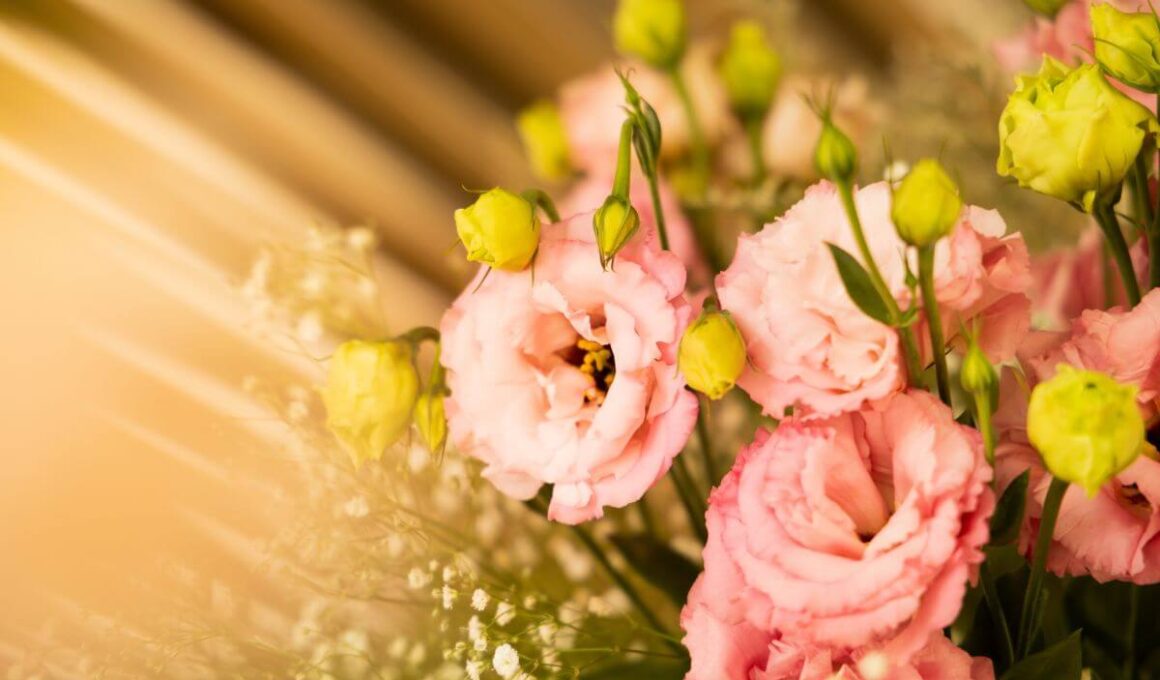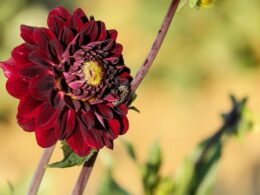What’s a Lisianthus Flower?
Lisianthus flowers are member of the genus Eustoma. These lovely flowers are available in a wide range of colors, from deep purple to pale pink, and they boast a delicate, ruffled appearance. Lisianthus flowers typically bloom in late spring or early summer, and they make an excellent addition to any garden. They also make perfect cut flowers.
Lisianthus Flower Appearance
The Lisianthus flower has long been associated with elegance and refinement, and it is often used in bouquets and other floral arrangements. The blooms come in a variety of colors, including white, pink, purple, and blue. The flowers are typically about 3 inches in diameter and have a long vase life, making them a popular choice for cut flowers. Lisianthus is also a popular houseplant; it is relatively easy to care for and can bloom year-round with proper care.
Lisianthus Flower Habitat and Distribution
The Lisianthus flower is a native of warm temperate and subtropical regions and in US zones 8 to 10. However, it has been introduced to other parts of the world, including Europe and Asia. Its habitat includes grasslands, prairies, and open woodlands.
Lisianthus Flower Care
Lisianthus flowers are beautiful and delicate, with a ruffled appearance that makes them look like miniature roses. Although they are often grown as annuals, lisianthus plants can actually be quite long-lived, with some varieties blooming for several years. Caring for a lisianthus flower involves providing the plant with ample sunlight, well-drained soil, and moderate watering.
Soil
The type of soil you use is important for the lisianthus flower. This flower prefers rich, well-drained soils. If your soil is sandy, add some organic matter to it. This will help the roots hold on to moisture and nutrients. The soil pH that is best for the lisianthus flower is between 6.0 and 7.0.
Water
Lisianthus flowers need to be watered regularly. The soil should be kept moist, but not soggy. Too much water can cause the roots to rot. Water in the morning so that the leaves have time to dry before nightfall.
Fertilizing
Fertilizing is important for the lisianthus flower. Use a balanced fertilizer to feed your plants. Apply the fertilizer every four weeks.
Light
Lisianthus flowers need full sun to partial shade. They will do best in an area that gets at least six hours of sunlight a day.
Pruning
After the lisianthus flowers have bloomed, cut the stems back to about six inches. This will encourage new growth and more flowers.
Temperature
Lisianthus flowers prefer warm temperatures. They will not do well in areas that are too cold or too hot. If you live in a climate that gets very hot, you can plant your lisianthus flowers in an area that gets some afternoon shade.
With proper care, lisianthus flowers will bloom from late spring to early summer. They make great cut flowers and will add beauty to any garden.
Lisianthus Flower Propagation
Lisianthus is a popular choice for cut flowers, but it can also be grown in the garden. Propagating lisianthus is relatively easy, and there are several methods that can be used. One common method is to take stem cuttings from an existing plant. The cuttings should be placed in water or moist soil, and they will typically root within a few weeks. Once the roots have developed, the plants can be transplanted into pots or the garden. Another method of propagation is to sow lisianthus seeds.
How to Grow Lisianthus Flowers From Seeds?
To grow the lisianthus from seed, begin by planting the seeds in individual pots filled with moistened potting mix. Place the pots in a sunny location and keep the soil moist but not soggy. Once the seedlings emerge, thin them out so that each pot contains only one or two plants. When the seedlings are large enough to handle, transplant them into a sunny location in the garden. Lisianthus plants prefer well-drained soil and should be watered on a regular basis during the growing season.



















